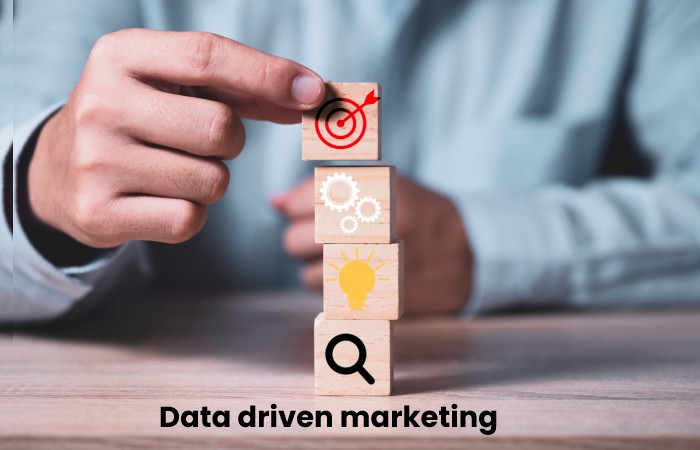Data-Driven
Being data-driven is often used in science and mathematics, such as IT. However, companies can leverage big data from their internal systems and external sources to become data-driven.
Being a data-driven company isn’t just about using metrics to monitor performance and profitability. In addition, it provides factual support to improve decision-making so companies can solve problems and improve processes. Therefore, companies should learn to become data-driven, using their internal and external resources to enhance performance.
Table of Contents
What Is Data-Driven Marketing?
Data-driven marketing, or data-driven marketing, is a strategy that uses information management to make decisions. The information comes from marketing tools such as project management platforms and social media analyses. Any device that tracks, measures, and analyzes historical marketing data uses it to develop an effective strategy for managing future campaigns.
The goal of data-driven marketing is to make every single element of your marketing content more personal. “Personalization” in this context means addressing the needs and interests of your target groups. Market research is now commonplace in marketing planning, but personalization gives you even more accurate facts and figures that show what works best for each audience. It saves your team time on market research, fills in critical knowledge gaps, and takes the guesswork out of making all marketing efforts more effective in one fell swoop.
What Are The Benefits Of Data-Driven Marketing?
Data-driven marketing offers numerous advantages. It’s more accessible and more effective; it brings proven results. Used correctly, It’s marketing can lead to a comprehensive increase in performance. Instead of guessing what your audience wants, your team looks at actual data and finds the answer.
What Kind Of Data Goes Into Data-Driven Marketing Campaigns?
Customer data falls into four main categories: person, engagement, behaviour, and attitude. Each type describes a specific aspect of your audience and their reactions.
- Personal information – Email addresses and phone numbers help marketers better understand individual accounts and identify patterns in their audience’s unique interests. However, personal data can only be collected with consent and requires the individual to sacrifice some of their time, even if just a few minutes. For best results, reward feedback with attractive free resources or tutorials.
- Engagement data shows you which aspects of your existing marketing the leads are responding to positively or not. “Engagement” ranges from liking a social media post to make a purchase decision in response to an email campaign.
- Behavioral data – Such as customer purchase histories, help you to create more detailed profiles and more attractive offers. For example, you can run A/B tests using targeted paid ads.
- Attitudinal data provides insights into how much your audience likes the products and experiences. Such data can be found, e.g. B., on external rating portals such as Yelp or industry-specific platforms such as TripAdvisor.
Data Collection
With modern management technology, companies have access to large amounts of data. It means they must be able to collect and store an extensive collection of information.
Organizations must also be able to filter out irrelevant, inaccurate, and biased data that can compromise their integrity and decision-making. Even the slightest data inaccuracies and biases can negatively affect the conclusions. It is also taking valuable storage space that can be used to hold high-profit items.
Therefore, companies should take their data science seriously by investing time in cleaning and preparing data. Data scientists spent 80% of their time collecting, cleaning, and preparing data and 20% analyzing the information to generate models and conclusions.
Conclusion
Data-driven is the best platform to know your customer. It is the modern way to understand the customer and progress according to their need. But, mainly, many companies are using to provide the balance.


